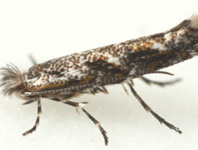Abstract
In this study, we systematized available distribution data, obtained from biological databases and relevant literature, for Mexican species belonging to the tribe Phanaeini. The main objectives were to provide an overall description of the distribution records in biological collections, to detect potential sampling biases, to describe the seasonality of collections and to obtain species distribution models using the Desktop GARP algorithm. A total of 5,562 records, corresponding to 32 species in Mexico, were compiled, including the recently described Phanaeus zoque Moctezuma & Halffter, 2017. This compilation includes 784 unique collection records at 325 localities. These records were mainly distributed along the Trans-Mexican Volcanic Belt, the Sierra Madre Oriental and Sierra Madre Occidental mountain ranges and throughout the states of Chiapas and Veracruz. The Mexican High Plateau, the state of Tlaxcala and the Yucatan Peninsula are lacking in records. Distribution maps were created for species of three genera (Phanaeus MacLeay, 1819, Coprophanaeus Olsoufieff, 1924, and Sulcophanaeus Olsoufieff, 1924) and for 29 species present in Mexico. These species distributions are largely delimited by geomorphological features and vegetation types and coincide with expert descriptions of this tribe; some species show expanded distribution ranges. These maps provide a starting point for further analyses, the planning of future field studies, and the verification of possible new species in the Mexican territory.
References
Anderson, R.P., Lew D. & Peterson, A.T. (2003) Evaluating predictive models of species' distributions: criteria for selecting optimal models. Ecological Modelling, 162, 211–232.
https://doi.org/10.1016/S0304-3800(02)00349-6Arnaud, P. (1997) Description de nouvelles espèces du genre Coprophanaeus Ols. Besoiro, 4, 4-8.
Arnaud, P. (2002) Phanaeini. Les coléoptères du monde. Vol. 28. Hillside Books, Canterbury, 151 pp.
Barve, N. (2008) Tool for Partial-ROC. Version 1.0. Biodiversity Institute, Lawrence, KS.
Barve N., Barve, V., Jiménez-Valverde, A., Lira-Noriega, A., Mahera, S.P., Peterson, A.T., Soberón, J. & Villalobos, F. (2011) The crucial role of the accessible area in ecological niche modeling and species distribution modelling. Ecological Modelling, 222, 1810–1819.
https://doi.org/ 10.1016/j.ecolmodel.2011.02.011Carpenter, G., Gillison A.N. & Winter, J. (1993) DOMAIN: a flexible modeling procedure for mapping potential distributions of plants and animals. Biodiversity and Conservation, 2, 667–680.
https://doi.org/10.1007/BF00051966Delgado-Castillo, L.L. (1991) A new Mexican species of Phanaeus (Coleoptera: Scarabaeidae). Opuscula Zoologica Fluminensia, 68, 1–6.
Edmonds, W.D. (1994) Revision of Phanaeus MacLeay, a New World genus of Scarabaeinae dung beetles (Coleoptera: Scarabaeidae, Scarabaeinae). Contributions in Science, 443, 1–105.
Edmonds, W.D. (2000) Revision of the neotropical dung beetle genus Sulcophanaeus (Coleoptera: Scarabaeidae: Scarabaeinae). Folia Heyrovskyana, 6, 1–60.
Edmonds, W.D. (2004) A new species of Phanaeus Macleay (Coleoptera: Scarabaeidae, Scarabaeinae) from Sonora, Mexico. The Coleopterists Bulletin, 58, 119–124.
https://doi.org/10.1649/697Edmonds, W.D. (2006) A new species of Phanaeus Macleay (Coleoptera: Scarabaeidae: Scarabaeinae: Phanaeini) from Oaxaca, Mexico. Zootaxa, 1171, 31–37.
Edmonds, W.D. & Zídek, J. (2010) A taxonomic review of the neotropical genus Coprophanaeus Olsoufieff, 1924 (Coleoptera: Scarabaeidae, Scarabaeinae. Insecta Mundi, 0129, 1–111.
Edmonds, W.D & Zídek, J. (2012) Taxonomy of Phanaeus revisited : Revised keys to and comments on species of the New World dung beetle genus Phanaeus MacLeay, 1819 (Coleoptera: Scarabaeidae: Scarabaeinae: Phanaeini). Insecta Mundi, 0274, 1–108.
Gullan, P.J. & Cranston, P.S. (2005) The insects: An outline of entomology. 3rd Edition. Blackwell Publishing, Malden, Massachusetts, 499 pp.
Halffter, G. & Edmonds, W.D. (1982) The nesting behavior of dung beetles. An ecological and evolutive approach. Instituto de Ecología A.C., México, D.F., 176 pp.
Hijmans, R.J., Cameron, S.E., Parra, J.L., Jones, P.G. & Jarvis, A. (2005) Very high resolution interpolated climate surfaces for global land areas. International Journal of Climatology, 25, 1965–1978.
https://doi.org/ 10.1002/joc.1276Hijmans, R.J. & van Etten, J. (2012) raster: Geographic analysis and modeling with raster data. R package version 2.0-12. Available from: http://CRAN.R-project.org/package=raster (accessed 1 August 2017)
Hortal, J., Jiménez-Valverde, A., Gómez, J.F., Lobo, J.M. & Baselga, A. (2008) Historical bias in biodiversity inventories affects the observed environmental niche of the species. Oikos, 117, 847–858.
https://doi.org/10.1111/j.0030-1299.2008.16434.xINEGI (2000) Conjunto de Datos Vectoriales de la Serie Topográfica 1:1'000,000. Available from: http://www.inegi.gob.mx/ (accessed 5 August 2013)
Martínez-Meyer, E. (2005) Climate change and biodiversity: some considerations in forecasting shifts in species’ potential distributions. Biodiversity Informatics, 2, 42–55.
https://doi.org/10.17161/bi.v2i0.8Morrone, J.J. (2005) Hacia una síntesis biogeográfica de México. Revista Mexicana de Biodiversidad, 76, 207–252.
Moctezuma, V. & Halffter, G. (2017) A new species of Phanaeus Macleay (Coleoptera: Scarabaeidae: Scarabaeinae) from Los Chimalapas, Oaxaca, Mexico. The Coleopterists Bulletin, 71 (1), 1–10.
Nichols, E., Spector, S., Louzada, J., Larsen, T., Amézquita, S. & Favila, M.E. (2008) Ecological functions and ecosystem services provided by Scarabaeinae dung beetles. Biological Conservation, 141, 1461–1474.
https://doi.org/10.1016/j.biocon.2008.04.011Nix, H.A. (1986) A biogeographic analysis of Australian elapid snakes. In: Atlas of Australian Elapid Snakes. Bureau of Flora and Fauna, Canberra, pp. 4–15.
Peterson, A.T. & Cohoon, K.P. (1999) Sensitivity of distributional prediction algorithms to geographic data completeness. Ecological Modeling, 117, 159–164.
https://doi.org/10.1016/S0304-3800(99)00023-XPeterson, A.T., Papeş, M. & Soberón, J. (2008) Rethinking receiver operating characteristic analysis applications in ecological niche modeling. Ecological Modelling, 213, 63–72.
https://doi.org/10.1016/j.ecolmodel.2007.11.008Philips, T.K., Edmonds, W.D. & Scholtz, C.H. (2004a) A phylogenetic analysis of the New World tribe Phanaeini (Coleoptera: Scarabaeidae: Scarabaeinae): Hypothesis on relationships and origins. Insect Systematics and Evolution, 35, 43–63. https://doi.org/10.1163/187631204788964664
Philips, T.K., Pretorius, E. & Scholtz, C.H. (2004b) A phylogenetic analysis of dung beetles (Scarabaeinae: Scarabaeidae): unrolling an evolutionary history. Invertebrate Systematics, 18, 53–88.
https://doi.org/10.1071/is03030Price, D.L. (2009) Phylogeny and biogeography of the dung beetle genus Phanaeus (Coleoptera: Scarabaeidae). Systematic Entomology, 34, 137–150.
https://doi.org/10.1111/j.1365-3113.2008.00443.xQGIS Development Team (2013) QGIS Geographic Information System. Open Source Geospatial Foundation Project. Available from: http://qgis.osgeo.org (accessed 1 August 2017)
R Core Team (2013) R: A language and environment for statistical computing. R Foundation or Statistical Computing, Vienna, Austria. Available from: http://www.R-project.org/ (accessed 1 August 2017)
Riley, E.G. & Wolfe, C.S. (2003) An annotated checklist of the Scarabaeoidea of Texas (Coleoptera). Southwestern Entomologist, 26 (Supplement), 1–37.
Tarasov, S. & Dimitrov, D. (2016) Multigene phylogenetic analysis redefines dung beetles relationships and classification (Coleoptera: Scarabaeidae: Scarabaeinae). BMC Evolutionary Biology, 16, 257.
DOI 10.1186/s12862-016-0822-xWalker, P.A. & Cocks, K.D. (1991) HABITAT: a procedure for modeling a disjoint environmental envelope for a plant or animal species. Global Ecology and Biogeography Letters, 1, 108–118.

